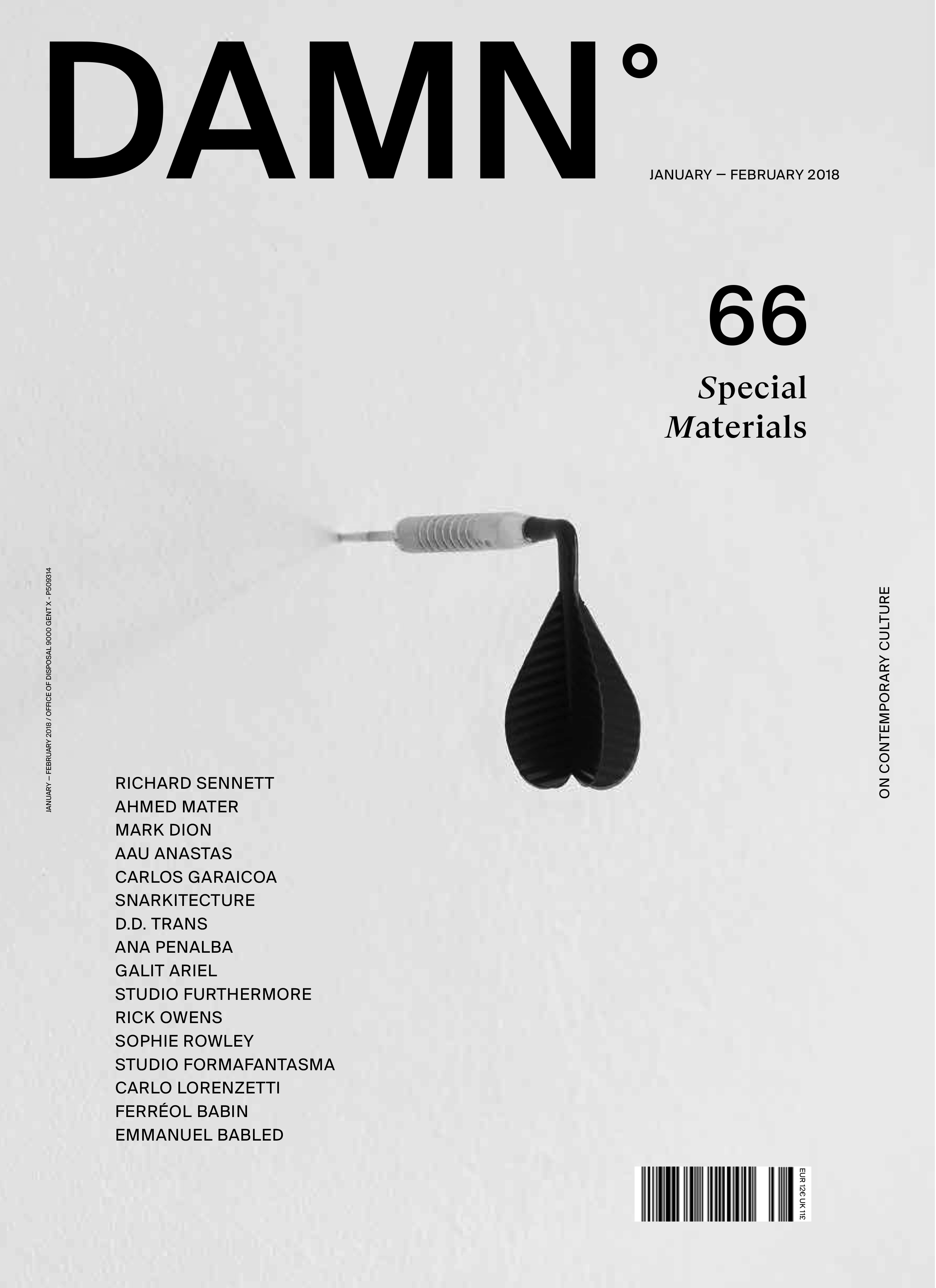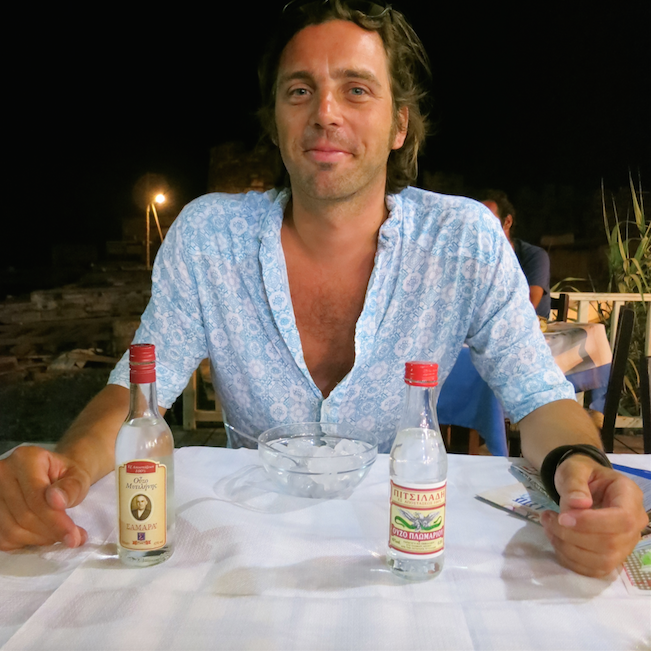DAMN°: You were born in Cuba, a country known for makeshift architectural solutions due to a shortage of building material. Does this creative DIY-attitude inspire you?
Carlos Garaicoa: I grew up in the north of Havana in a poor family. I saw the necessity of housing there, which was a big problem. I have been working with recycling and taking a lot of pictures of decaying buildings. In the early 2000s, I got invited to Documenta in Kassel, where I decided to do a project on the Micro Brigade. That was a social experiment, for which people who already had a job could apply and skip their job for two years to learn to build a house. First, you helped construct several houses before you made your own. It gave people the opportunity to build their own houses. You can see a lot of areas in Havana and Cuba that have this typical vernacular socialist architecture. I was really interested in seeing the development from the early 70s and the collapse of the Soviet Union. At a certain moment, many of those buildings stayed unfinished. On one hand, you had the collapse of the Old City, on the other, the unfinished buildings of the Micro Brigade. So the dream of having a house of one’s own was over for many people. In this gap, I developed the project for Documenta. I got very focused on the Micro Brigade as an unfinished project of socialism and modernism.
DAMN°: Ruins of run-down buildings in Havana have o en in ired you for utopian ideas. Can you tell something more about how you deal with the notion of ruins?
CG: My first approach to the city of Havana in the 90s was through many things I found on the street or numbers. Imagine a city where the only information on the street is political. There are no advertisements but only propaganda. I started finding many things that were not notable and was interested in rewriting the city. I began doing a lot of documentation, assuming the role of an archaeologist. I was interested in that notion of archaeology in which you can find the story of the present, past, and future of a place through an object. Those ruins that were in front of me were really interesting and easy to access. My work is very narrative and deals a lot with storytelling. I was interested in writing fiction about the ruins. Ruins have this kind of romantic and melancholic thing that romanticises the past, like in the paintings of Caspar David Friedrich. But I am more interested in talking about Cuba’s present, not its past. Many of the buildings I use and ruins I photograph come from places that have no clear history. I have always been careful not to use heavy historical buildings. The history is not important. For me, the most important thing as a contemporary artist is what I can say about the present and the future.
DAMN°: You often work around Havana. Is it a metaphor for certain global developments that are also happening elsewhere?
CG: I developed my whole career in Havana. So it was a place where I discovered the methodologies that I am using today. Growing up as an artist in Cuba in the 90s, you were always looking abroad. For places like Cuba, Africa and Asia, which were in the periphery, it has been really difficult to enter the international art system. For my generation of Cuban artists, it was a big issue how to talk in another context without losing what you are doing. It was clear that I had to say something about Havana, as some of the processes Havana went through in the early days also happen elsewhere. You see the gentrification in many cities. I have been travelling to New York in the 90s and saw how much it changed the last 20 years. I have a studio in Spain and there it was the same. This idea of the city and how people are living and acting in it is almost similar. It is just different how the economy and politics affect those places. Havana is an important metaphor in my work. And it is a metaphor for what is happening today in many places.
DAMN°: You said your approach is that of an artist rather than that of an architect looking at the city. Can you elaborate on that?
CG: I think a big difference is the goal. Looking at a city as an architect encompasses other goals than an artist. I try to use the city as a way to put information inside buildings in a political, existential and poetical way. The goal of an architect is to build. Most artists use painting or sculpture. For me, it is buildings and the city. Of course, I am not only interested in making a beautiful place, but in the social as well. I am very clear when you are looking at a model; you are reflecting many things that are not the same as a building. I have a lot of freedom in my thinking. When I work with architects, they have to follow many rules. Once in my life, I almost built an actual building. The Observatory was a library in the UK that I had been working on for five years together with architects. But in the end, we never managed to realise it.
Carlos Garaicoa. El Palacio de las Tres Historias, Fondazione Merz, Turin, until 4 February.
Porto Seguro: 6 February - 13 May, 2018 Parasol Unit: 12 April - 10 June, 2018




Carlos Garaicoa: I grew up in the north of Havana in a poor family. I saw the necessity of housing there, which was a big problem. I have been working with recycling and taking a lot of pictures of decaying buildings. In the early 2000s, I got invited to Documenta in Kassel, where I decided to do a project on the Micro Brigade. That was a social experiment, for which people who already had a job could apply and skip their job for two years to learn to build a house. First, you helped construct several houses before you made your own. It gave people the opportunity to build their own houses. You can see a lot of areas in Havana and Cuba that have this typical vernacular socialist architecture. I was really interested in seeing the development from the early 70s and the collapse of the Soviet Union. At a certain moment, many of those buildings stayed unfinished. On one hand, you had the collapse of the Old City, on the other, the unfinished buildings of the Micro Brigade. So the dream of having a house of one’s own was over for many people. In this gap, I developed the project for Documenta. I got very focused on the Micro Brigade as an unfinished project of socialism and modernism.
DAMN°: Ruins of run-down buildings in Havana have o en in ired you for utopian ideas. Can you tell something more about how you deal with the notion of ruins?
CG: My first approach to the city of Havana in the 90s was through many things I found on the street or numbers. Imagine a city where the only information on the street is political. There are no advertisements but only propaganda. I started finding many things that were not notable and was interested in rewriting the city. I began doing a lot of documentation, assuming the role of an archaeologist. I was interested in that notion of archaeology in which you can find the story of the present, past, and future of a place through an object. Those ruins that were in front of me were really interesting and easy to access. My work is very narrative and deals a lot with storytelling. I was interested in writing fiction about the ruins. Ruins have this kind of romantic and melancholic thing that romanticises the past, like in the paintings of Caspar David Friedrich. But I am more interested in talking about Cuba’s present, not its past. Many of the buildings I use and ruins I photograph come from places that have no clear history. I have always been careful not to use heavy historical buildings. The history is not important. For me, the most important thing as a contemporary artist is what I can say about the present and the future.
DAMN°: You often work around Havana. Is it a metaphor for certain global developments that are also happening elsewhere?
CG: I developed my whole career in Havana. So it was a place where I discovered the methodologies that I am using today. Growing up as an artist in Cuba in the 90s, you were always looking abroad. For places like Cuba, Africa and Asia, which were in the periphery, it has been really difficult to enter the international art system. For my generation of Cuban artists, it was a big issue how to talk in another context without losing what you are doing. It was clear that I had to say something about Havana, as some of the processes Havana went through in the early days also happen elsewhere. You see the gentrification in many cities. I have been travelling to New York in the 90s and saw how much it changed the last 20 years. I have a studio in Spain and there it was the same. This idea of the city and how people are living and acting in it is almost similar. It is just different how the economy and politics affect those places. Havana is an important metaphor in my work. And it is a metaphor for what is happening today in many places.
CG: I think a big difference is the goal. Looking at a city as an architect encompasses other goals than an artist. I try to use the city as a way to put information inside buildings in a political, existential and poetical way. The goal of an architect is to build. Most artists use painting or sculpture. For me, it is buildings and the city. Of course, I am not only interested in making a beautiful place, but in the social as well. I am very clear when you are looking at a model; you are reflecting many things that are not the same as a building. I have a lot of freedom in my thinking. When I work with architects, they have to follow many rules. Once in my life, I almost built an actual building. The Observatory was a library in the UK that I had been working on for five years together with architects. But in the end, we never managed to realise it.
Carlos Garaicoa. El Palacio de las Tres Historias, Fondazione Merz, Turin, until 4 February.
Porto Seguro: 6 February - 13 May, 2018 Parasol Unit: 12 April - 10 June, 2018

Carlos Garaicoa. El Palacio de las Tres Historias, Fondazione Merz, Turin

Carlos Garaicoa. El Palacio de las Tres Historias, Fondazione Merz, Turin

Carlos Garaicoa, Yo nunca he sido surreali a ha a el día de hoy MAAT, Lisbon 2017




